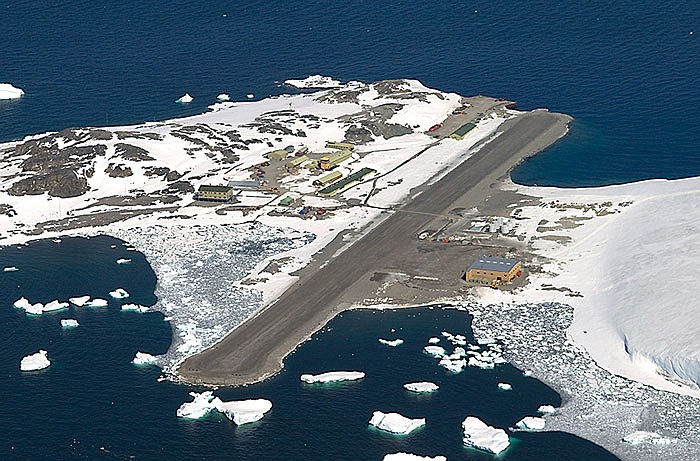WASHINGTON (AP) - Flying through dangerous cold and pitch-dark, a small plane is making a 1,500-mile trip to evacuate a sick worker from a remote U.S. science station on the South Pole.
A Canadian Twin Otter plane left a British base in Antarctica Tuesday morning for the nine-hour flight, said Peter West, spokesman for the National Science Foundation , which runs the U.S. station. A second turboprop stayed behind on the ice-covered runway at the Rothera station in case something goes wrong with the rescue attempt.
There have been three emergency evacuations from the Amundsen-Scott station since 1999. Workers at the South Pole station are isolated during the coldest months when it's too risky for routine flights.
The latest mission is pushing the limits of what is acceptable, said Tim Stockings, operations director at the British Antarctic Survey in London. He said being prepared is key.
"The air and Antarctica are unforgiving environments and punishes any slackness very hard," Stockings said. "If you are complacent it will bite you."
"Things can change very quickly down there" with ice from clouds, high winds and snow, he said.
The first day of winter in the Southern Hemisphere was Monday - the sun will not rise at the South Pole till the first day of spring in September.
Usually the rescue flight crew - a pilot, co-pilot, flight engineer and medical worker - has to rest before a return flight from the pole, West said. After refueling at the pole, the plane will return to the British base and then the ill worker will be taken out of Antarctica for medical treatment, he said.
The National Science Foundation decided last week to mount the rescue operation because the unidentified staffer needed medical care that can't be provided there. The station has a doctor, a physician's assistant and is connected to doctors in the U.S. for consults, West said.
The foundation has not disclosed the individual's illness or condition but said the worker is an employee of Lockheed Martin, which provides logistical support. There are 48 people - 39 men and nine women - at the station, West said.
He said two station workers are ill and officials were still trying to decide whether to evacuate both or just the sickest one.
The danger is the dark, the cold and the weather, Stockings and West said. Cold affects a lot of things on planes, including fuel, which needs to be warmed before takeoff, batteries and hydraulics, West said. The Twin Otter can fly in temperatures as low as minus 103 degrees, he said.
The temperature Tuesday morning at the South Pole station was minus 75 degrees, according to Weather Underground.

